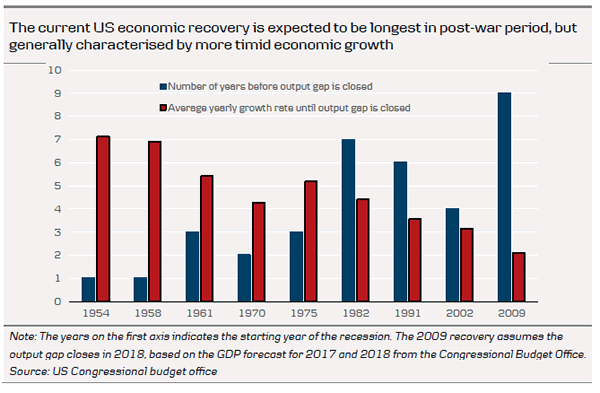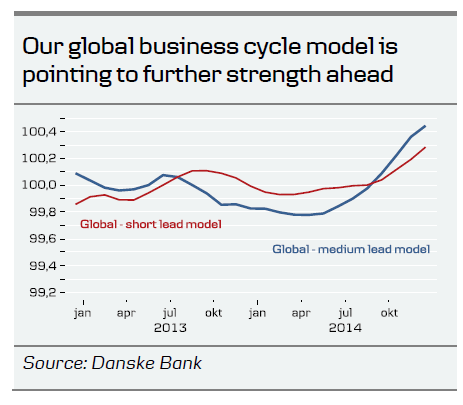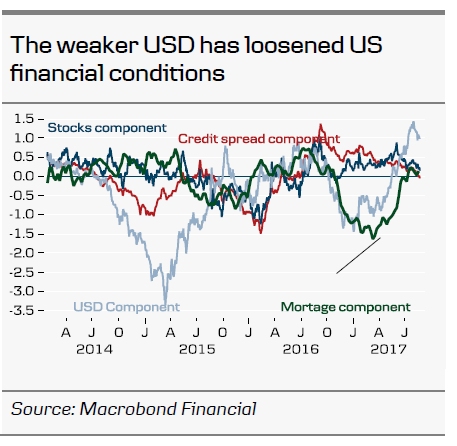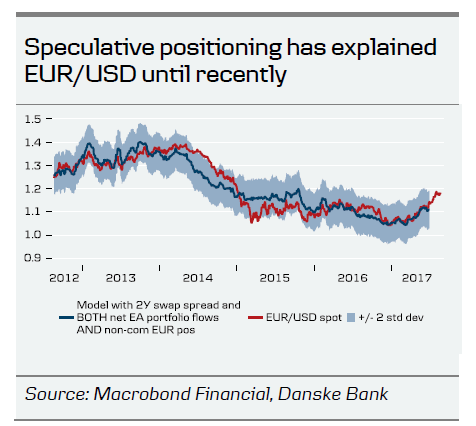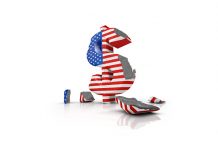When the world central bank leaders meet at the Jackson Hole these days, they are faced with a unique situation: still, after years of recovery and despite sizeable political uncertainty in the US, global growth momentum seems to be getting stronger. The ongoing economic expansion in the US (which in one sense is more mature than the recovery in the euro area) has now lasted eight years, which makes it the third longest expansion of the post-war era. If it continues until spring 2019, which we think it could, it will be the longest non-stop economic expansion of the post-war period.
The economic expansion has been followed by a sizeable reduction in unemployment rates in key advanced economies such as the US, Germany, Sweden. Yet, inflation pressures in these countries remain relatively muted. As a result, central banks do not appear in a hurry to scale back the extraordinary monetary policy measures implemented over the past few years, which could put an end to the expansion. At the Jackson Hole meeting, we expect Fed Governor Janet Yellen to continue to signal a gradual tightening cycle, with the next rate hike likely to be in December, followed by one-two hikes next year. Similarly, as we have stated previously, Mario Draghi is likely to sound slightly on the dovish side, as he is wary of the impact of the stronger euro on inflation in the eurozone in coming years.
A key question is why the US recovery seems to be having a longer duration this time than in the past? Three features stand out: first, the depth of the crisis in 2008-09 was much greater than for most of the past recessions in the US; second, the US economy did not see as strong an immediate rebound as after other recessions. In the years since the crisis, the economy has expanded at a generally slower pace than in normal recovery phases, probably due to overinvestment prior to the crisis, need for deleveraging and a series of global shocks, such as the euro debt crisis, the oil price shock in 2014 and slowdown in Chinese growth in 2014-15. Finally, it is a fallacy that expansions die of old age, and monetary policy has not been as loose as perceived generally, as the neutral rate has declined as well.
US growth is likely to be supported by the significant loosening of financial conditions, due especially to the weaker USD, while in Europe, the PMIs recently seemed to indicate that European companies are weathering the stronger euro. More globally, capex is set to add support to the global recovery as we pointed out in Strategy: Capex set to add support to global recovery, 4 August 2017.
What are the financial implications? Well, given that the economic expansion in the US and globally seems to have more legs and that global central banks do not appear to be in a hurry to tighten monetary policies as of yet, this will be supportive for risk assets. We see equities as a buy on dips currently, though we are more neutral further ahead. While we expect global bond yields to be in range for the next few months, we expect higher US yields as the output gap closes in 2018.
Expectations on Trump’s growth-friendly policies at a minimum
Given that the Trump administration so far has failed to deliver on any significant part of its electoral promises, notably the repeal of Obamacare over the summer, we think most in the markets have lowered their expectations on any sizeable fiscal stimulus to a minimum. We have from the start been quite sceptical about both the timing and scale of these initiatives given the sizeable disagreement in the Republican Party. In June, we discounted any boost from Trump’s growth-friendly policy agenda on economic growth in 2017-18. However, with the failure on repealing Obamacare, the Republicans in Congress and President Trump are doubling up on efforts to push tax cuts through. However, we remain sceptical that such an agreement can be found given the sizeable disagreement in the Republican Party regarding financing and in light of the upcoming difficult negotiations surrounding the debt ceiling, which may actually be a risk to global market risk sentiment.
EUR/USD to stay in range near term, looking at 1.30 long term
One of the most striking features in the financial markets over the past months has been the rise in the EUR/USD. This week, we published a research note. digging a bit deeper into the reasons for the rise. One of our clear findings was that the recent optimism about the outlook for the euro area has spurred sizeable equity flows and speculative positioning, lending support to the euro. While we think that the EUR/USD will trade in range near term as these flows abate somewhat, we think the eventual pricing of an ECB exit and sizeable euro area current account surpluses will send the cross towards 1.30 in coming years. Hence, we recommend that clients with receivables in USD should look to hedge their exposure using longer-dated forwards and speculative investors to be long EUR/USD.
